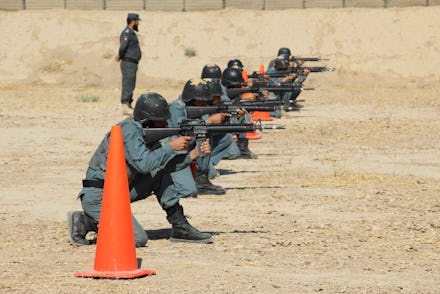The war in Afghanistan has been a huge failure — and military leaders knew it

U.S. government officials have known for years that the war in Afghanistan is an utter failure, and they kept it a secret, according to a blockbuster trove of documents obtained by The Washington Post. A series of interviews with high-ranking military officials conducted by the government exposed the ongoing series of missteps that turned the conflict into a trillion-dollar boondoggle. The interviews were not initially meant to become public, but after the Post sued over a Freedom of Information Act request, the documents were released. The newly public information includes 2,000 pages of interviews.
The legal fight over the request between the newspaper and an office known as the Special Inspector General for Afghanistan Reconstruction took two years. The interviews were initially condensed into six so-called Lessons Learned reports, which were unclassified and released to the public. These were far more sanitized and vague than the actual interviews, however. After these reports came out, the Post submitted a FOIA request for the raw documents at the core of the matter.
The quotes in the interviews are stark and damning. “We were devoid of a fundamental understanding of Afghanistan — we didn’t know what we were doing,” retired Army Gen. Douglas Lute, who served both the Bush and Obama administrations in Afghanistan, told interviewers in 2015. “What are we trying to do here?” he asked, rhetorically. “We didn’t have the foggiest notion of what we were undertaking.”
More 2,200 American troops have died in Afghanistan, and the conflict has cost the U.S. government $2 trillion. According to The New York Times, more than 50,000 Afghan troops have died since 2014, when the country’s military officially took over from the U.S. As of this fall, there are still around 13,000 American troops in Afghanistan.
What they’re doing there is no longer remotely clear. The interviews paint a picture of a war effort that, after an initial victory over the Taliban in 2002, shifted into a misguided and badly managed nation-building effort that has never managed to keep the peace, quell the Taliban, or slow the opium poppy trade. Troops have come and gone, their numbers increasing and decreasing every few years, but the military hasn’t come any closer to achieving peace in the country — even as it told the public that the situation was improving.
Per the documents, officials intentionally shifted metrics to create a rosy picture for the public. “It was impossible to create good metrics. We tried using troop numbers trained, violence levels, control of territory, and none of it painted an accurate picture,” said a person who was identified only as a senior National Security Council official. The person said that the Obama White House wanted to portray its 2009 surge positively. “The metrics were always manipulated for the duration of the war,” the official said.
In other words, U.S. commanders portrayed their work positively, because they knew it was what their superiors needed to hear. And according to the interview subjects, the Afghan population knew that the American military force had neither the will nor the ability to follow through with a successful effort.
"He thought you could simply wave a magic wand and POOF!”
“Afghans knew we were there temporarily, and that affected what we could do,” said Marc Chretien, a State Department official, in an interview recounted in the documents. “An elder in Helmand [a province in southern Afghanistan] once told me as much, saying: ‘Your Marines live in tents. That’s how I know you won’t be here long.’” Because of the Americans’ implied impermanence, Afghans were hesitant to trust the U.S. soldiers, and civilians never put much stock in the governments that Americans tried to install.
The interview subjects didn’t just speak in generalities about the war effort. They also covered specifically how and why certain military initiatives and nation-building tactics failed spectacularly. Discussing the 2009 battle to retake the city of Marja, retired Army Gen. Stanley McChrystal, who oversaw the war effort under President Barack Obama, claimed that the military had “a government in a box” set up to implement in the city after the Taliban was expelled. The plan was for a U.S.-approved government to take over and begin providing services for people so that the city could transition out of conflict into stability. This was not successful; the U.S.-backed transition government did not hold in Marja. According to Jeffrey Eggers, an adviser to McChrystal, this plan exemplified the kind of overconfidence that doomed the war effort.
“One of McChrystal’s hardest lessons was his government-in-a-box program, which typified the American wartime machinery," Eggers said. "He thought you could simply wave a magic wand and POOF!” Another McChrystal adviser, Barnett Rubin, described the American approach to counterinsurgency as “colonial power,” explaining, “Afghans knew this influx of funds wouldn’t last, and they wanted to make the best of the windfall without endangering themselves. It was a fantasy.”
As it stands now, President Trump has committed the military to staying in Afghanistan until either “total victory” is achieved or a deal is reached with the Taliban. “They want to make a deal very badly,” he said, over Thanksgiving. That sounds nice on TV. But if recent history is any indication, the combination of military overconfidence and political pressure to achieve a positive-sounding result for Americans at home is unlikely to lead to a meaningful resolution to the war effort anytime soon.